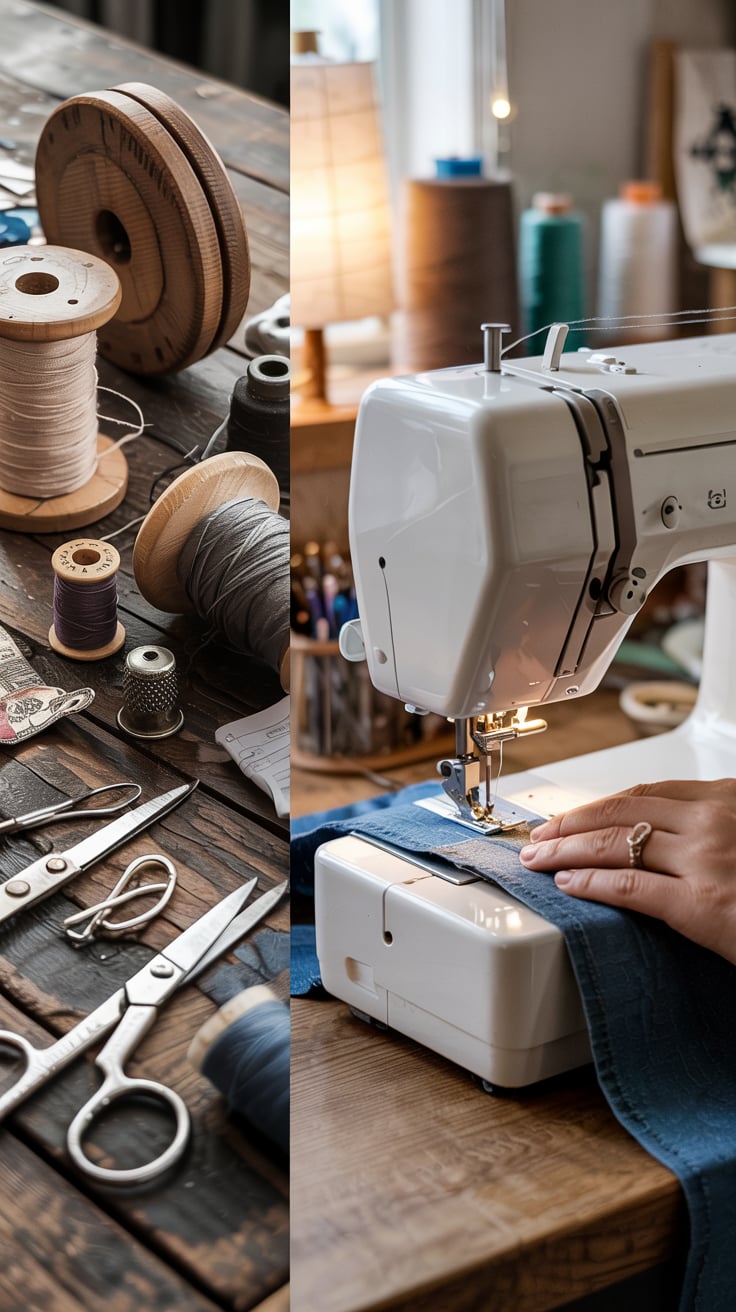When starting a new fashion project, one of the first decisions you’ll make is whether to sew by hand or use a sewing machine. Both methods have their advantages and challenges, and the best choice depends on the type of fabric, design complexity, and your personal skill level.
This guide will compare hand-sewing vs. machine-sewing to help you determine which method is best for your DIY fashion and sewing projects.

Why the Right Sewing Method Matters
- Affects Durability – The strength of your stitches determines how long your garment lasts.
- Impacts Design Precision – Fine details may require delicate hand-stitching, while machines can handle complex seams.
- Saves Time or Enhances Craftsmanship – Machines speed up projects, while hand-sewing offers a personal touch.
- Essential for Different Fabrics – Some materials require specific stitching techniques for the best results.

Hand-Sewing: The Benefits and Best Uses
Pros of Hand-Sewing
✔️ Precision & Detail: Ideal for delicate fabrics, embroidery, and intricate designs.
✔️ Portability: No need for electricity; you can sew anywhere.
✔️ Better Control: Useful for adjustments, hemming, and small repairs.
✔️ Timeless Craftsmanship: Gives a high-quality, couture touch to garments.
Best Uses for Hand-Sewing
- Embroidery and embellishments
- Invisible seams and hemming
- Delicate fabrics like lace or silk
- Hand-quilting and small detailed projects

(This blog contains affiliate links, meaning I make a small commission at no extra cost to you.)
📌 Product Recommendation: Invest in a high-quality hand-sewing kit with durable needles, strong thread, and precision scissors to enhance your experience.
Machine-Sewing: The Benefits and Best Uses
Pros of Machine-Sewing
✔️ Speed & Efficiency: Great for large projects and everyday wear.
✔️ Consistent Stitching: Ensures even, professional-looking stitches.
✔️ Strong Seams: More durable for structured garments and thicker fabrics.
✔️ Variety of Stitch Options: Most sewing machines offer multiple stitch settings.

Best Uses for Machine-Sewing
- Sewing structured garments like coats or jeans
- Creating professional, even seams
- Working with thick fabrics like denim or canvas
- High-volume sewing projects
📌 Product Recommendation: A versatile sewing machine with adjustable speed and multiple stitch settings is a great investment for beginners and professionals alike.
When to Combine Hand-Sewing and Machine-Sewing
Sometimes, the best approach is to use both methods to achieve the perfect finish. Here’s when to mix hand and machine techniques:
- Use a machine for major seams and hand-sew finishing touches for refinement.
- Hand-sew delicate areas like buttons, embroidery, or hems on lightweight fabrics.
- Machine-stitch the main garment, then hand-stitch linings and embellishments for couture-quality results.
Final Thoughts: Which Method is Best for You?
- Beginners & DIY Enthusiasts: Start with hand-sewing for precision, then transition to a machine for efficiency.
- Fashion Designers & Tailors: Use machines for production and hand-sewing for detail work.
- Sewing Hobbyists: Choose based on project needs—some projects benefit from a handcrafted touch, while others require machine speed.

Get Started on Your Next Sewing Project!
Whether you choose hand-sewing, machine-sewing, or a combination of both, the key is selecting the right tools and techniques for your project. Try both methods and see which one works best for your style!

📌 Pin This for Later! Share this guide on Pinterest and inspire fellow sewing enthusiasts!